Kingdom Animalia Order Charadriiformes Genus Charadrius Rank Species | Phylum Chordata Family Charadriidae Scientific name Charadrius vociferus Higher classification Charadrius | |
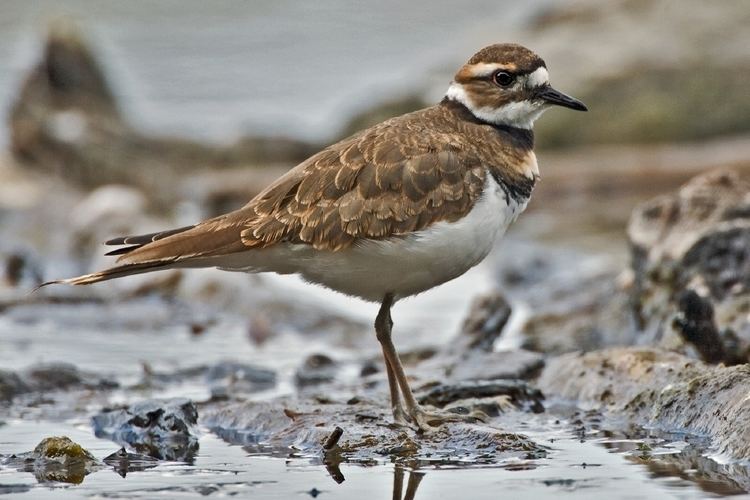 | ||
Similar Bird, Plover, Charadrius, Semipalmated plover, Greater yellowlegs | ||
Killdeer bird fakes being injured
The killdeer (Charadrius vociferus) is a medium-sized plover. The genus name Charadrius is a Late Latin word for a yellowish bird mentioned in the fourth-century Vulgate. It derives from Ancient Greek kharadrios a bird found in ravines and river valleys (kharadra, "ravine"). The specific vociferus is Latin and comes from vox, "cry" and ferre, "to bear".
Contents
- Killdeer bird fakes being injured
- Unusual wild bird this is how a wild killdeer protects her nest in busy parking lot
- Description
- Habitat
- Nesting
- Behavior
- References
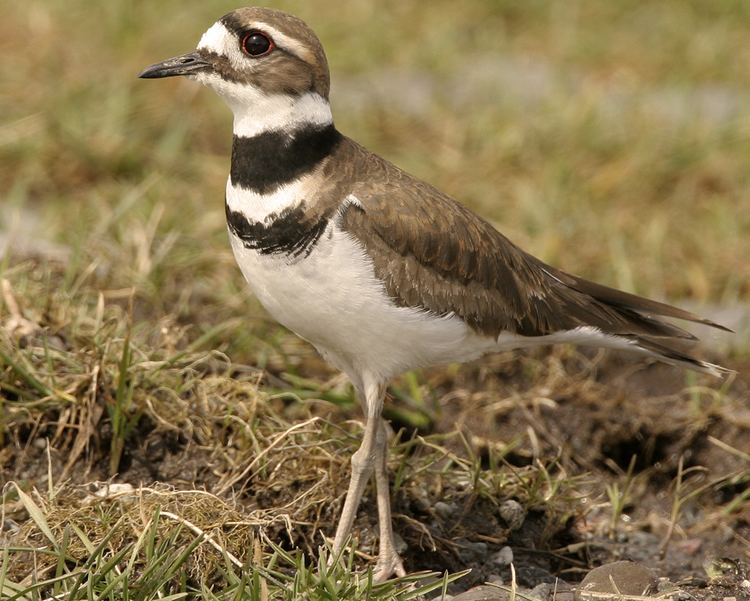
The adults have a brown back and wings, a white belly, and a white breast with two black bands. The rump is tawny orange. The face and cap are brown with a white forehead. The eyering is orange-red. The chicks are patterned almost identically to the adults, and are precocial — able to move around immediately after hatching. The killdeer frequently uses a "broken wing act" to distract predators from the nest. It is named onomatopoeically after its call.

Unusual wild bird this is how a wild killdeer protects her nest in busy parking lot
Description
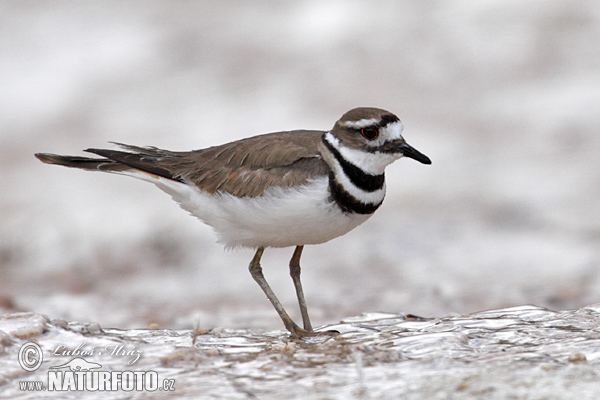
Adult killdeer range in length from 23–27 cm (9.1–10.6 in) with a wingspan averaging 17.5 cm (6.9 in). The largest ringed plover, killdeer weigh 88 g (3.1 oz) on average.
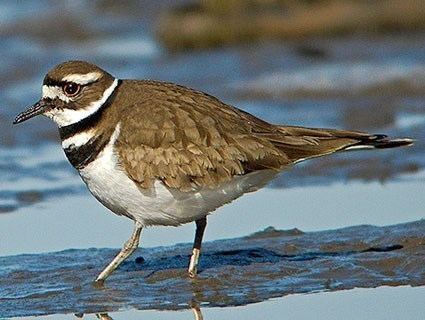
Killdeer have a characteristic large, round head, long tail, long flesh-colored legs, and long wings. The bill is short, dark, and thick. Plumage is brownish-tan on dorsal areas and white on the ventral belly and chest; the neck is also surrounded by a white collar. Two large, dark bands surround the upper breast with an additional band located on the head, spanning both the forehead and the area above the bill and continuing around the back of the head. The tail is brown with a black subterminal band, a white terminal band, and white outer tail feathers. Additional defining plumage characters include a brightly colored red-orange rump that is visible during flight and displays, white wing stripes visible during flight. Appearance does not vary between males and females, although breeding females may have additional brown plumage on the head. Juveniles resemble adults with the exception of buff fringe feathers and the presence of only one neck band
Habitat
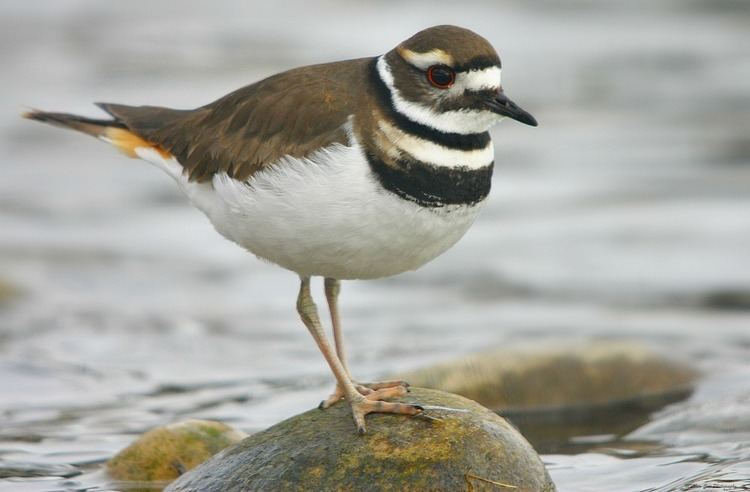
During nesting season killdeer use open dry uplands, open areas where vegetation is short or absent, agricultural field, and meadows. In addition, Hayman et al. document killdeer use of open wetland habitat and savannahs, selecting dry bare ground and dry ground with vegetation within wetland areas. Nesting habitat is characterized as having enough nest materials to form a scrape but otherwise having little or no vegetation; Killdeer have also been recorded using gravel roofs as nesting habitat.
During the non-breeding season killdeer use coastal wetland and beach habitat as well as coastal fields. Ogden et al. suggest that coastal open-soil agricultural lands supplement intertidal habitat frequently used by killdeer during the non-breeding season. Because fertilizer application as well as the prevention of habitat fragmentation benefits killdeer as well as a host of other migratory shorebirds, maintaining a mosaic of habitat in coastal farmland areas is optimal for maintaining killdeer populations.
Nesting
The range of the killdeer spreads across the Western Hemisphere. In the summer, killdeer live as far north as the Canadian provinces of Ontario, British Columbia, Alberta,the Yukon and Quebec, as well as the southern parts of the U.S. state of Alaska. Killdeer hold a year-round presence across the southern half of the United States and parts of Peru. The killdeer winters throughout Central America. Although killdeer are considered shorebirds, they often live far from water. They live in grassland habitats such as fields, meadows, and pastures. The nest itself is merely a shallow depression or bowl in the ground, fringed by some stones and blades of grass. The nest is well camouflaged, as the spots of the eggs disguise them as stones, and the simple structure of the nest resembles its surroundings. Like many other waders, killdeer hatchlings are precocial birds and are able to see and forage soon after hatching.
Behavior
They are migratory in northern areas and winter as far south as northern South America. They are rare vagrants to western Europe, usually late in the year.
These birds forage for food in fields, mudflats, and shores, usually by sight. They mainly eat insects. In built up areas they will forage in large parking lots. If those lots are well lit, they may forage at night.
Their name comes from their frequently heard call. These birds will frequently use a distraction display ("broken-wing act") to distract predators from their nests. This involves the bird walking away from its nesting area holding its wing in a position that simulates an injury and then flapping around on the ground emitting a distress call. The predators then think they have easy prey and are attracted to this seemingly injured bird and away from the nest. If the parent sees that a potential predator is not following them, they will move closer and get louder until they get the attention of the predator. This is repeated until the predator is far from the nest, and the killdeer suddenly "heals" and flies away.
Their ability to exploit a wide range of agricultural and semi-urban habitat has helped keep them common and widespread in their range.
